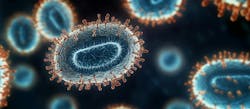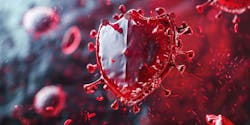Blood tests have long been a staple of medical diagnostics and laboratory analysis, but the day may be coming when patients are more routinely asked for stool samples to test for certain infectious diseases and perhaps even to identify their risk of heart attack, stomach ulcers, or cancers such as colon cancer. Coupled with the growing trend toward molecular diagnostics, the use of stool testing could mean an exciting new chapter for clinical laboratories. Why stool testing, and why molecular diagnostics?
There are significant advantages in using stool samples for diagnostic testing, especially when a simple stool test can replace more invasive procedures such as colonoscopies or broncho-alveolar lavage. Patients faced with diagnostic procedures that are uncomfortable or embarrassing are often inclined to avoid them, risking diagnosis that comes too late for effective treatment. Invasive procedures also can tie up hospital facilities, require professional services of multiple practitioners (doctors, nurses and technicians), and expose patients to radiation and risks such as perforation and infection. In addition, patients may have to take significant time from work or other activities for preparation and testing.
There also is substantial expense to these invasive procedures, with an average colonoscopy running approximately $3,000 in the United States. Replacing some of this invasive and costly testing with a simpler, more accurate method will provide relief, reassurance and better outcomes for patients, and will result in lower healthcare costs at a time when costs are under intense scrutiny.
Stool testing has long been used to diagnose certain infectious diseases, mainly parasites and intestinal infections. A stool antigen diagnostic is available to test for Helicobacter pylori (H. pylori), one of the most common causes of stomach ulcers, and occult blood detection in fecal samples has been one of the traditional warning signs for colon cancer. Now, however, there are FDA-cleared molecular stool tests for colon cancer and Clostridium difficile (C. difficile), and more are on the way.
But stool diagnostics aren’t limited to diseases of the digestive tract. A research team from the Medical College of Wisconsin in Milwaukee recently published a report1 suggesting that changes in intestinal bacteria can help indicate a patient’s risk of heart attack. The time may be near when physicians can intervene to prevent or better treat these events and possibly use probiotics to help protect a patient undergoing heart surgery or related procedures. There is also current research suggesting that certain respiratory diseases can be detected from stool assays, most notably tuberculosis.2
Use of molecular diagnostic methods has increased over the past ten years to improve the sensitivity and speed of diagnosis in infectious diseases. While early molecular diagnostics were slow and complex to use, commercial kits and automation are making these methods less complicated. Molecular diagnostic methods are now widely used for epidemiological fingerprinting and increasingly to diagnose genetic and infectious disease. Improved accuracy means faster diagnosis and more effective treatment, while avoiding overuse of prescribed antibiotics when the provider uses differential diagnoses. In addition, some microorganisms have developed the ability to evade or inactivate antibiotics. Accurate diagnosis and targeted intervention mean improved outcomes and reduced healthcare costs. Market analysts predict a 15% increase in the molecular diagnostic market over the next several years.3
Infectious disease is the leading cause of death worldwide and results in more than 20 million physician visits in the United States each year. The CDC estimates that food-borne diseases cause more than $9 billion in healthcare-related costs annually and that preventing a single fatal case of E. coli could save $7 million.4 Cryptosporidium and Giardia, the two most commonly diagnosed intestinal parasites in this country, cause an estimated 2.3 million clinical infections each year. However, most cases in which patients show symptoms of food-borne disease are never diagnosed.5 And these diseases do not affect only isolated patients, but can lead to public outbreaks. In 1993, Milwaukee experienced the largest waterborne Cryptosporidium outbreak in U.S. history when over 400,000 of its 1.6 million residents became infected, and more than 100 died.6
With increasing numbers of labs gearing up to adopt molecular diagnostic methods and the prevalence of severe food and water-borne diseases, Phthisis Diagnostics set out to develop a catalogue of molecular diagnostics for a range of parasitic and infectious diseases, beginning with Cryptosporidium and Giardia.
Working with stool samples to develop those diagnostic products led the company to seek a simpler, easier method of extracting DNA from stool. The company has recently launched its kit to extract DNA from stool and other complex samples and is now completing clinical testing of the first diagnostics. The DNA extraction kit has just nine steps, requires only two sample transfers, and takes less than thirty minutes.
It may seem like an unlikely development, but the emergence of new research focused on stool assays—combined with the growth of molecular diagnostics—holds great promise both for patients and for laboratories.
Crystal Icenhour, PhD, is President and Chief Science Officer for Charlottesville, Virginia-based Phthisis Diagnostics. She has more than 10 years experience in infectious disease research and has served on the board of the American Society for Microbiology.
References





